NIL
John Mateer, Fernando Mendoza and other top transfers to watch in 2026 NFL Draft class
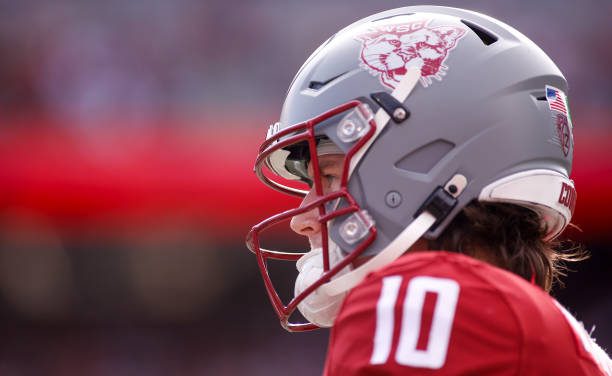
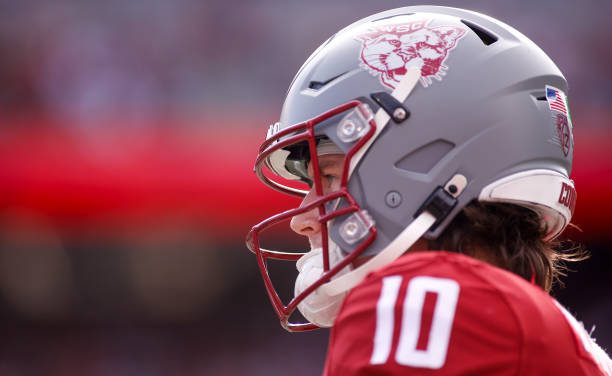

When we first started monitoring the transfer portal back in 2018, the first few classes were relatively thin on NFL Draft talent.
That is definitely no longer the case.
The days of transfers mainly being backups who didn’t play enough are long over, and college football’s portal is now firmly in its full-blown free-agency era, with quality starters at every position — including some with potential first-round draft grades — looking to better their situation (financially or otherwise).
Here’s a look at my favorite 2026 draft prospects from this offseason’s portal, by position.
Quarterback
1. Fernando Mendoza, Indiana (from Cal)
2. John Mateer, Oklahoma (from Washington State)
3. Carson Beck, Miami (from Georgia)
4. Nico Iamaleava, UCLA (from Tennessee)
5. Miller Moss, Louisville (from USC)
This year featured the deepest and most talented collection of available college quarterbacks since the transfer portal became a thing.
It’s a tough group to sort right now, but Mendoza is my pick as the top transfer QB. The 6-foot-5, 221-pounder not only comes with ideal size and above-average athleticism but also terrific arm talent. The fit between Mendoza and Indiana coach Curt Cignetti looks like a terrific one, and Mendoza has enough ability to land a first-round draft grade.
Mateer reminds me of recent No. 1 pick Cam Ward, who also transferred from Washington State. It wouldn’t be a shock to see a breakout year from the Sooners’ new quarterback.
I’ve already heard some hand-wringing from Miami fans about why draft analysts seem to be down on Beck, two years after thinking he would be a first-rounder. Beck’s 2023 season — Georgia’s last with Brock Bowers — was very good; his 2024 season was less so. Beck is more athletic than people think, plays with good size and throws an accurate ball without fear over the middle, but he has also shown poor aptitude against pressure and inconsistency on vertical shots, and he’s not as quick in the pocket as his testing numbers may indicate. This will be an important year for him.
Advertisement
Running back
1. Makhi Hughes, Oregon (from Tulane)
2. Jaydn Ott, Oklahoma (from Cal)
3. Justice Haynes, Michigan (from Alabama)
4. Rahsul Faison, South Carolina (from Utah State)
5. CJ Donaldson, Ohio State (from West Virginia)
Hughes will make the big jump to Oregon this year after rushing for nearly 3,000 yards and 22 touchdowns combined the last two seasons at Tulane. A durable, tough, quick-footed bell cow with good vision and a willingness to block, Hughes (5-11, 210 pounds) is expected to take over for Jordan James inside the Ducks’ high-powered offense, and he could provide similar value. He’s also a legit pass protector who isn’t afraid to step into a blitzing linebacker.
Ott was high on scouting boards last summer before an ankle injury derailed his season. The 6-0, 210-pounder runs with elite burst and balance, and he offers great vision and big-play potential in the pass game.
Haynes, a former top-40 recruit, has as much talent as anyone on this list — he just never got a shot to show it at Alabama, where he had double-digit carries in just one game the last two seasons. He’ll have to earn it at Michigan, too, as talented sophomore Jordan Marshall figures to be his top backfield mate.
Wide Receiver
1. Eric Singleton Jr., Auburn (from Georgia Tech)
2. Malachi Fields, Notre Dame (from Virginia)
3. KC Concepcion, Texas A&M (from N.C. State)
4. Zachariah Branch, Georgia (from USC)
5. Dane Key, Nebraska (from Kentucky)
There were a ton of high-end receivers in the portal, and this list also could have included Ole Miss’ De’Zhaun Stribling, Penn State’s Trebor Pena, Florida State’s Duce Robinson, LSU’s Barion Brown and several others.
Singleton, a Georgia state sprint champion in the 100, 200 and 400 meters, has a second-level burst and shows zero fear (at 5-11, 190) as a confident ball tracker.
The 6-4, 220-pound Fields — a former QB — is extremely intriguing as a big, explosive target with reliable hands and great potential after the catch. He had 13 contested catches last season at Virginia.
Concepcion, a 20-year-old junior, is a crafty slot receiver who was great after the catch and used heavily in the sweep game at NC State. It’s a similar conversation for Branch, now at Georgia. The 5-10, 180-pound former five-star prospect comes to Athens with truly elite speed and averaged more than eight yards after the catch last season.
Advertisement
Tight end
1. Max Klare, Ohio State (from Purdue)
2. Jack Endries, Texas (from Cal)
3. Tanner Koziol, Houston (from Ball State)
4. Luke Hasz, Ole Miss (from Arkansas)
5. Terrance Carter Jr., Texas Tech (from Louisiana)
Klare and Endries are similar prospects. Both stand around 6-4, 240 and are versatile, three-down tight ends with strong hands, toughness and real upside in the run game. Endries is arguably a better blocker at this point, but Klare may have more long-term athletic potential as a route runner and after the catch.
The former broke out as a sophomore last season with 56 catches for 623 yards; the latter (seen in the clip below) had 51 grabs for 685 yards and four TDs.
Koziol, a 6-7, 237-pound former wide receiver, was a production machine last year at Ball State, finishing with 93 catches for 840 yards and three scores. A terrific athlete with a ridiculous catch radius, he made an FBS-best 26 contested catches.
Offensive line
1. Isaiah World, OT, Oregon (from Nevada)
2. Monroe Mills, OT, Virginia (from Louisville)
3. Elijah Pritchett, OT, Nebraska (from Alabama)
4. Luke Petitbon, C, Florida State (from Wake Forest)
5. Joshua Braun, G, Kentucky (from Arkansas)
A hulking 6-8, 312-pounder, World heads to Oregon after three years spent starting at left tackle for Nevada. A gigantic player with the movement skills of a former basketball player, World came to college at around 270 pounds but bulked up and had his best year last season. He looks like a top-100 talent and has a chance to improve his stock while playing against better competition this year.
Mills, meanwhile, is one of the rare four-team college players — he has made stops at Oklahoma State, Texas Tech, Louisville and now Virginia, although he’s expected to miss the coming season because of an Achilles injury. We’ll see where the imposing 6-7, 320-pounder is at, health-wise, after the year.
Pritchett, a former top-40 recruit who started during his first year at Alabama last season, brings power and versatility to Nebraska’s front, albeit with the need to further prove himself on a big stage.
Edge
1. David Bailey, Texas Tech (from Stanford)
2. Patrick Payton, LSU (from Florida State)
3. Beau Atkinson, Ohio State (from North Carolina)
4. Romello Height, Texas Tech (from Georgia Tech)
5. Marvin Jones Jr., Oklahoma (from Florida State)
Bailey is a former top-40 recruit who plays with great speed, burst and length off the edge. He’s a bendy pass rusher who has no trouble dipping and turning the corner against larger tackles. One of Texas Tech’s many quality portal pulls, Bailey had a combined 22 1/2 sacks in three years at Stanford, mainly as a subpackage player.
Payton, meanwhile, had draft buzz entering the 2024 season after a breakout 2023. The 6-5, 255-pounder saw a production dip last year but has the potential to be a true three-down presence.
Atkinson (6-6, 265) is intriguing and put up 7 1/2 sacks and 25 pressures with 26 run stops last season, despite being a part-time rotational player. A long, rangy edge presence with power everywhere, Atkinson has put on nearly 30 pounds since high school.
Advertisement
Defensive tackle
1. Lee Hunter, Texas Tech (from UCF)
2. Bernard Gooden, LSU (from USF)
3. David Gusta, Kentucky (from Washington State)
4. Bear Alexander, Oregon (from USC)
5. Keeshawn Silver, USC (from Kentucky)
Hunter is a fridge on wheels. The 6-4, 325-pounder had dominant flashes inside during each of his past two seasons at UCF, making more than 50 tackles in 2023 alone and combining for 49 pressures during those two years. Big and powerful enough to eat space as a nose tackle, Hunter can make plays on the ball well outside his square in ways few 320-pounders can.
Gooden (6-1, 280) is undersized but can move and run like a linebacker — he’s athletic with great flexibility and burst. He played mainly as a three-tech last season at South Florida but also has spent a ton of time over the tackle as a heavy edge, despite his size.
From a pure talent standpoint, Alexander might have an argument for the top spot on this list. However, he has also shown little consistency during stops at Georgia and USC. If he can put it together, we’ll see his stock soar.
Linebacker
1. Amare Campbell, Penn State (from North Carolina)
2. Mohamed Toure, Miami (from Rutgers)
3. Kendal Daniels, Oklahoma (from Oklahoma State)
4. James Djonkam, Virginia Tech (from Eastern Michigan)
5. Nikhai Hill-Green, Alabama (from Colorado)
A rangy, explosive athlete who made 76 tackles (10 1/2 for loss) and 6 1/2 sacks last season, Campbell should be able to immediately step into a starting role for Jim Knowles at Penn State. Fast enough to run with tight ends in the slot and twitchy enough to beat offensive linemen at the point of attack, Campbell is a great blitzer and boasts big-time potential as a junior.
Toure missed all of last season with an ACL injury (the second of his college career) but still served as Rutgers’ team captain after an outstanding 93-tackle, 4 1/2-sack 2023 season. If he can stay healthy, he’ll be a great addition for Miami — and give scouts a chance to re-evaluate where he’s at as a prospect.
Secondary
1. Dillon Thieneman, S, Oregon (from Purdue)
2. Mansoor Delane, CB, LSU (from Virginia Tech)
3. Josh Moten, CB, Southern Miss (from Marshall)
4. DJ Harvey, USC (from San Jose State)
5. Tacario Davis, CB, Washington (from Arizona)
One of the country’s best players on a bad team each of the last two seasons, Thieneman (a true junior) was Big Ten Freshman of the Year in 2023, with six interceptions and eight forced incompletions. He followed that up with eight forced incompletions and six pass breakups last season. A do-it-all safety, he can play deep, in the box or in the slot and doesn’t miss many tackles.
One of the best players in the country, Thieneman will have top-30 buzz entering the 2025 season.
One half of a great Virginia Tech duo, alongside Dorian Strong, Delane had a career-best four interceptions and 51 tackles last season — and probably would’ve been drafted had he declared. He didn’t quite have the year many anticipated he would in 2024 (he was Dane Brugler’s No. 5 corner last summer), but he still has the size (6-1, 190) and potential to be a truly consistent corner in man or zone.
(Top photo of John Mateer: Alika Jenner / Getty Images)
NIL
Josh Pate defends Joel Klatt amid G5 backlash, proposes second tier to College Football Playoff

FOX Sports analyst Joel Klatt found himself in a social media firestorm after comments he made about the Group of Five on a podcast appearance on Next Round Live. Clips of that interview quickly went viral with short snippets of some of the quotes.
The gist of those snippets suggested that Klatt was anti-G5, to the point of wanting the G5 kicked out of the College Football Playoff. Klatt intimated that the only thing keeping the G5 in the playoff currently is the threat of litigation.
College football analyst Josh Pate had his own thoughts on Joel Klatt’s take. He mostly came to the defense of the suddenly targeted analyst.
Pate first played a couple clips from Klatt’s appearance in their entirety. That offered more full context.
“Some of that was insane, I’m going to grant you that,” Pate said of Klatt’s points. “I just want to say the foundation of it I at least understand. The foundation of it is sound. Not all the parts of it. The foundation of it is sound.
“Couple of quotes there. No. 1, the G5 is in the College Football Playoff to avoid litigation is basically true.”
Pate lambasted the use of quote edits in condensing Joel Klatt’s much larger point into a few soundbites. He tried to explain how that’s misleading to his viewers.
“You know sometimes how you see a snapshot or a small soundbite of something and you get outraged by it and then you go on to learn the context of it two weeks later and you’re like, ‘Wow, I probably shouldn’t have gotten as outraged as I did over that,’ Pate said. “That is what is happening to Klatt. Admittedly he brought a lot of this on himself. …
“Now, what you probably saw was you probably saw quote edits like this or quote graphics like this. And if you’re listening on podcast just imagine scrolling through your social feed and there’s a picture of Klatt, looks like he’s somewhere sunny and happy and there’s a quote at the top, and it says, quote, ‘We don’t want Cinderellas. We want the best teams playing each other at the end. It’s the dumbest tournament and the least fair tournament in all of sports.’”
That part from Joel Klatt, obviously, was what many detractors latched onto. But it doesn’t take away from Klatt’s overall point about the G5, Pate pointed out.
So all the moaning over James Madison being in the playoffs is for naught. That’s just the way the current structure is set up.
“They are present in the playoff, they’re granted an auto bid in the playoff because if they are not then lawsuits will be filed immediately,” Pate said. “So that part’s accurate.
“Now whether or not you think it’s morally sound that they’re included in the playoff, that’s your own opinion. He’s got his, I’ve got mine, you’ve got yours. But he is right. Because in no other merit-based world where we just judged these teams on a static scale of quality, of resources and therefore what you do with the resources, and the results on the field and strength of schedule, in no world would James Madison be in the playoff. But the parameters of the playoff right now are that we take the five highest-ranked conference champs. So by every current rule James Madison is in the playoff and should be in the playoff. I don’t disagree with that. Tulane is in the playoff and should be in the playoff. I don’t disagree with the structure. I don’t disagree with the body of the playoff this year based on the current rules.”
So what’s the solution? Well, Joel Klatt also offered an answer for that. It just didn’t happen to go viral with the other stuff.
Klatt believes the G5 should effectively break off from the power conferences and host its own playoff. It would be a playoff tier between the FCS and the FBS.
“That’s been the same point that’s been made on my show,” Pate said. “So you notice if you really hated the G5 you’d just say, ‘Piss on the G5.’ That’s not what he did, despite the fact that that part didn’t get shared widely and it’s not what I’ve ever done on this show.
“Any time you have a problem with something, you ought to have a solution for it. So if your problem is, ‘Man, it makes little sense that we’ve got 136 teams pretending to play the same caliber of the sport’ you need to have a solution. That solution he just presented is the same one we’ve shared on this show, and that is a G5 playoff.”
NIL
How NIL has transformed Ohio State’s recruiting from star-chasing to strategic roster building
COLUMBUS, Ohio — The days of simply collecting as many five-star talents as possible in college football recruiting are over.
In a revealing Buckeye Talk podcast episode, Ohio State analysts Stephen Means and Andrew Gillis detailed how the program has shifted to a more sophisticated “roster construction” approach that mirrors NFL team building more than traditional college recruiting.
“I think that because the financial aspect has come into this but also just logical roster building that has become more of a focal point than star, star, star, star, stars,” explained Stephen Means. “Because for a long time, college football was like, get as much talent as you humanly can, develop it, cuz you were living in a world where the top 1% of college football had all the talent. And that’s not true anymore.”
This fundamental shift in philosophy is perhaps most evident in how Gillis described Ohio State’s running back recruiting needs for the 2027 class. While five-star David Gabriel Georgees tops their board, the approach is more nuanced than just stacking elite talent.
“If they got three five stars running backs, the odds that we got on this podcast and said that’s actually probably not that good is higher than it might seem because we were saying why is your asset management this? Like because hey, look at your your receiver recruiting was down. You couldn’t have spent some of that money on a receiver,” Gillis explained.
The financial component of recruiting has transformed how Ohio State approaches each position group and recruiting class. It’s no longer just about who’s the best player available, but whether investing heavily in one position might shortchange another.
“It is a math equation. It is a money equation at this point. You’re not going to go get three five stars at running back in a single class,” Gillis emphasized.
Means further elaborated on how NIL money has forced this change: “You can’t pay a fivestar recruit, fivestar recruit money and then have the guy sitting on the bench because there’s another guy with there’s only so much money to go around.”
This strategic approach has Ohio State looking at players through different lenses: “ready to go” immediate contributors (typically five-stars and top-100 recruits), “developmental” prospects (usually ranked 200-350 nationally), and “depth” pieces who might be ranked lower but fill specific roles.
The analysts identified several instances where this approach is evident in Ohio State’s 2027 planning. At quarterback, they’re content with a developmental prospect in Brady Edmonds rather than chasing another five-star. At wide receiver, despite already having five-star Jir Brown committed, they believe Ohio State needs another elite receiver plus two depth pieces to properly structure the room.
“Now we are talking about roster construction,” Means said. “And the reason why we structured it this way is okay, they went and got a devel they have a developmental quarterback in 2027. They probably need a ready to go quarterback in 2028 and they probably need a depth quarterback in 2029. And the cycle continues, right?”
This staggered approach ensures Ohio State will have players at different stages of development at every position, creating a sustainable pipeline of talent ready to contribute when needed.
“Everybody everybody’s running the same race, but they can’t be running it at the same pace or you’re not going to have a team to field every single year,” Means added.
The conversation revealed how Ohio State’s recruiting approach now more closely resembles NFL roster management, with considerations for “salary cap” (NIL budget), positional value, and development timelines all factoring into decisions that previously might have been simply about collecting the highest-ranked players available.
As college football continues to evolve in the NIL era, this strategic roster construction philosophy may become the new standard for elite programs looking to maintain sustainable success.
Here’s the podcast for this week:
NIL
Texas Tech announces football staff contract extensions
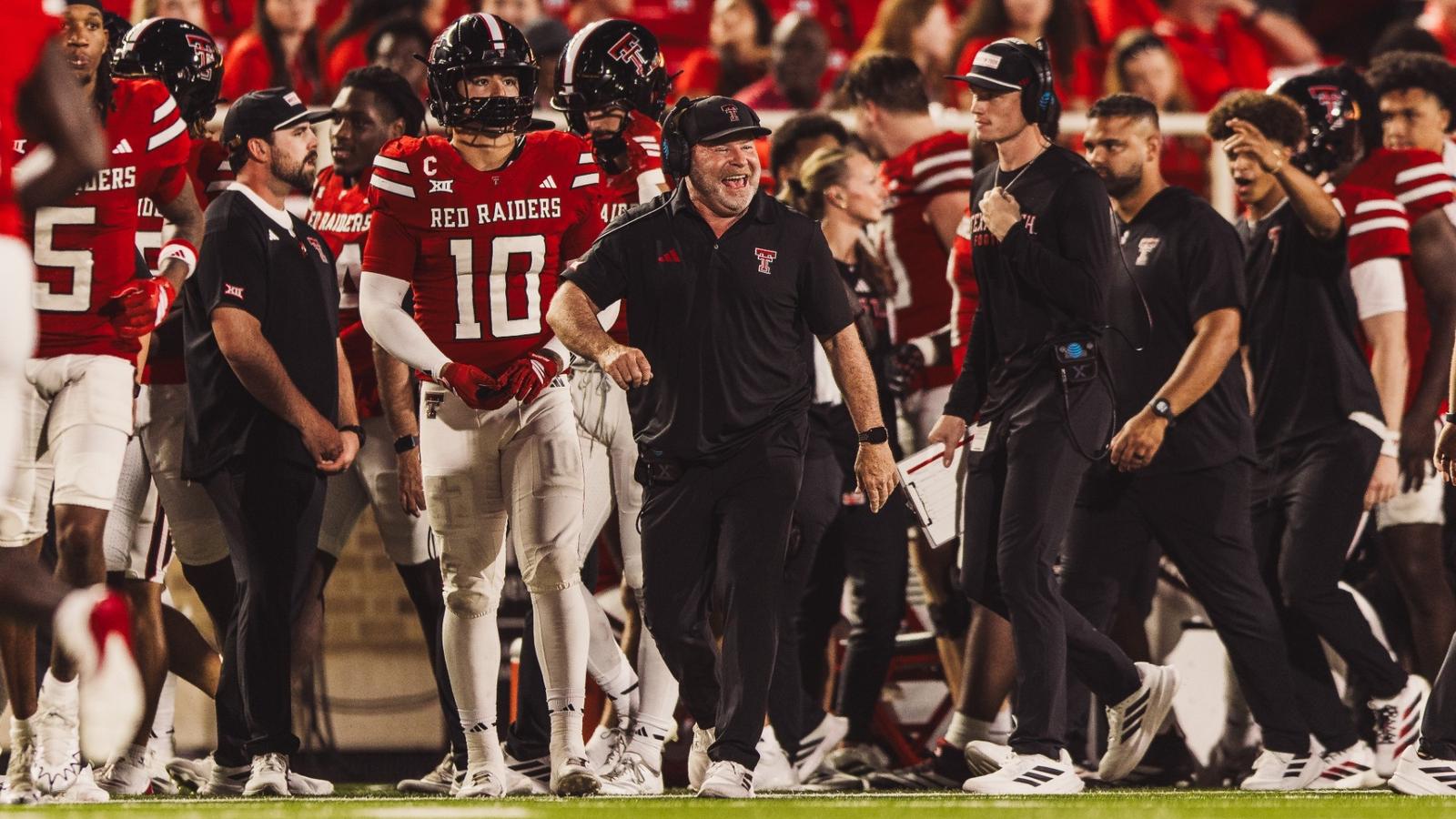
LUBBOCK, Texas – Texas Tech announced Tuesday it has come to terms on contract extensions for four key members of its football coaching staff: general manager James Blanchard, offensive coordinator Mack Leftwich, associate head coach and special teams coordinator Kenny Perry and defensive coordinator Shiel Wood.
Texas Tech agreed to the extensions with Blanchard and its three coordinators in recent weeks, pushing each of their contracts through the 2028 season with significant financial investments included as well as a revised buyout structure. McGuire, himself, agreed to a new seven-year contract following the regular season, only days prior to leading the Red Raiders to their first Big 12 Conference title in school history.
“I appreciate Kirby Hocutt and our administration for proactively investing in the future of our football program,” McGuire said. “Our expectation is to compete annually for championships with this staff and the resources we have in place here at Texas Tech. While we still have goals in front of us this season, we’re thankful to have the support of an incredible fan base and administration that believes strongly in the future of this program.”
Texas Tech enters the College Football Playoff Quarterfinal at the Capital One Orange Bowl with a 12-1 record, having already snapped the single-season school record for wins ahead of a potential matchup with either No. 5 Oregon or No. 12 seed James Madison. The Red Raiders are in the College Football Playoff for the first time in program history following a 34-7 rout over previously-No. 11 BYU in the Edward Jones Big 12 Championship.
Texas Tech has dominated opponents this season with all 12 wins coming by at least 20 points. In the process, the Red Raiders joined only Alabama in 2018 as the only teams in the Associated Press era (since 1936) to record 12 or more wins by 20-plus points prior to a bowl game. The 12 wins by that margin are already both a Texas Tech and Big 12 Conference record and are one shy of the FBS record that was set by Clemson in 2018.
The Red Raiders’ success has stemmed from all three sides of the ball with a stingy defense, another high-scoring offense and an aggressive approach on special teams. To date, Texas Tech is the only team in the country to rank in the top five for scoring offense (42.5), scoring defense (10.9), total offense (480.3 yards per game) and total defense (254.4 yards allowed per game). The Red Raiders are also the FBS leaders in both takeaways (31) and rush defense (68.5 yards allowed per game) and rank 10th for passing offense (289.4 yards per game), creating the balance McGuire desired upon his hiring four years ago.
On special teams, the Red Raiders have combined to block five kicks this season, which is tied with Penn State for the most in the FBS. Texas Tech has been among the most-aggressive teams in the country under Perry, blocking a total of 14 kicks during his four seasons, which leads all Big 12 programs during that span and ranks in the top five nationally. Texas Tech is also the only team in the country to rank in the top 20 for both kick return average and kickoff return defense this season, all while boasting a Paul Hornung finalist in running back and returner J’Koby Williams and a Lou Groza semifinalist in kicker Stone Harrington.
Perry was a charter member of McGuire’s staff upon his hiring prior to the 2022 season as he has been part of four-consecutive bowl appearances and 25 wins over Big 12 opponents, the most in the conference during that span. Both Leftwich and Wood are completing their first seasons on staff after arriving this past offseason on three-year contracts.
Kickoff for the Capital One Orange Bowl is set for 11 a.m. CT on New Year’s Day with coverage provided on ESPN and the Texas Tech Sports Network.
NIL
Paul Finebaum labels newly unemployed college football coach as ‘arrogant’
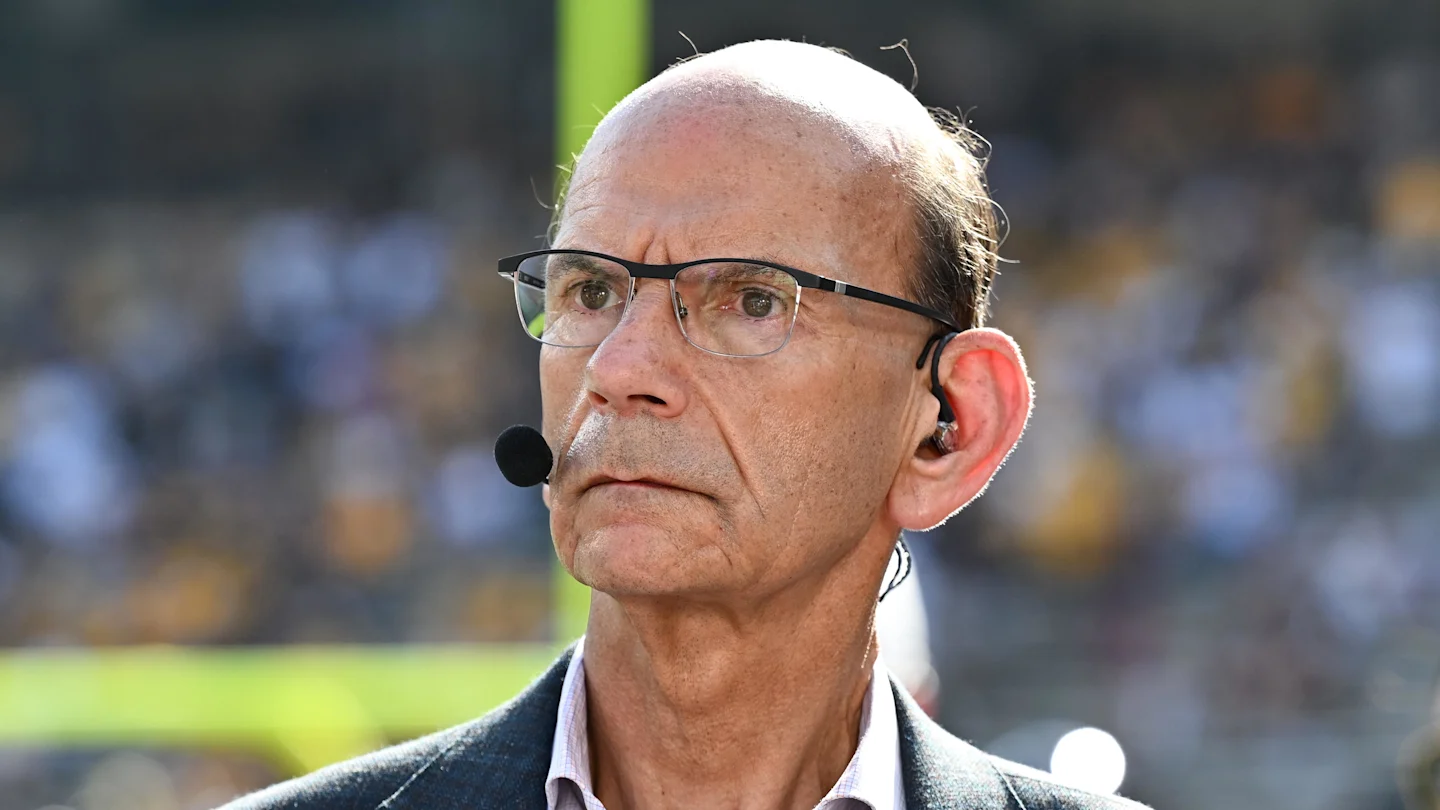
It’s no surprise that opinionated college football personality Paul Finebaum had some pointed responses when asked to describe certain college football coaches with just one word.
But his description for former LSU and Notre Dame coach Brian Kelly was particularly interesting.
“Arrogant,” Finebaum said.
We asked for one word to describe these top college football coaches, and @finebaum did not disappoint. pic.twitter.com/9KmL2oTMPJ
— Alabama Crimson Tide | AL.com (@aldotcomTide) December 16, 2025
In the spirit of the bit, he didn’t expound on the label, and many college football fans will surely nod at that description for the fired former Tigers coach. But what makes it interesting in this case is that Finebaum had Kelly as a weekly guest on Mondays during the football season and was usually very deferential to the coach for taking the time to join him.
“Coach, always appreciate you coming on, on Monday,” Finebaum said to close out Kelly’s last weekly appearance before he was fired on Oct. 26.
That said, he’s not wrong.
There’s a reason there has been almost zero buzz around Kelly’s name for any job opening this cycle, despite his status as the winningest active coach in college football with an official record of 297-109-2 across his tenures at Division II Grand Valley State, Central Michigan, Cincinnati, Notre Dame and LSU, with 21 more wins officially vacated from his Notre Dame record.
Kelly stunned the college football world when he left Notre Dame after 12 seasons and five straight double-digit-win seasons, including 11-1 in his final year there in 2021, for LSU while saying publicly that he wanted “to be in an environment where I have the resources to win a national championship.”
Never mind that Kelly had led Notre Dame to the national championship game after the 2012 season, losing to Alabama, and that, without him, the Fighting Irish reached the national championship game last year (losing to Ohio State).
He drew further ire when he said he was rooting for the Irish in that title game last year while noting that he had recruited many of the players involved.
Of course, Kelly’s LSU tenure seemed misfit almost from the start when he slipped into a fake southern accent during his introductory press conference.
1 day at LSU Brian Kelly has developed a southern accent pic.twitter.com/ct8PUpcEEE
— Pardon My Take (@PardonMyTake) December 3, 2021
Then there was the awkward video of Kelly showing off his dance moves with a recruit …
LSU coach Brian Kelly is dancing again — this time with TE target Danny Lewis.
Rate his dance moves 🕺👇
— Rivals High School (@RivalsHS) January 29, 2022
But the biggest problem was that Kelly simply didn’t win enough in Baton Rouge. He never reached a College Football Playoff with the Tigers, never finished higher than No. 12 in the final rankings, dipped to 9-4 last year and then 5-3 this season before he was fired.
NIL
Elon Announces 2026 Football Schedule
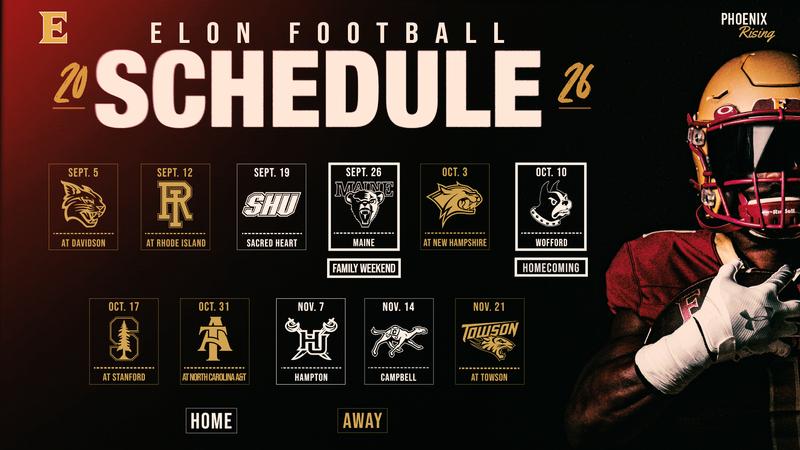

Football
Elon Athletics
Five-Game Home Slate, Road Trip To Stanford Highlight Schedule
ELON – Elon football head coach Tony Trisciani and the Phoenix released their 2026 football schedule Tuesday afternoon in conjunction with an announcement from the Coastal Athletic Association. The 11-game schedule is highlighted by a mid-October trip to Stanford and an eight-game CAA slate that gets started in week two.
The Phoenix will play five home games at Rhodes Stadium, including Sept. 26 for Family Weekend against Maine and Oct. 10 for Homecoming against Wofford.
Elon opens the season with two straight road games at Davidson (Sept. 5) and CAA foe Rhode Island (Sept. 12). The Phoenix defeated the Wildcats 55-7 in its 2025 home opener. The trip to Rhode Island will be Elon’s first since 2022.
Elon plays its home opener on Sept. 19 against CAA newcomer Sacred Heart and then closes out the month of September by hosting Maine on Sept. 26 for Family Weekend.
After completing the first half of its CAA schedule by returning to the northeast to face New Hampshire on Oct. 3, the Phoenix welcomes former Southern Conference rival Wofford to Rhodes Stadium for Homecoming on Oct. 10. It’ll serve as Elon’s only home game in October.
Elon will make its first-ever West Coast trip to face Stanford on Oct. 17, marking the fourth straight season it has clashed with an ACC opponent. A bye week will then lead to another October road game at North Carolina A&T on Halloween (Oct. 31).
The Phoenix closes its home schedule against Hampton (Nov. 7) and Campbell (Nov. 14) before playing its regular-season finale at Towson (Nov. 21), a squad it defeated 17-3 on the road in 2025.
2026 ELON FOOTBALL SCHEDULE
Aug. 29 – Bye
Sept. 5 – at Davidson
Sept. 12 – at Rhode Island
Sept. 19 – vs. Sacred Heart
Sept. 26 – vs. Maine (Family Weekend)
Oct. 3 – at New Hampshire
Oct. 10 – vs. Wofford (Homecoming)
Oct. 17 – at Stanford
Oct. 24 – Bye
Oct. 31 – at North Carolina A&T
Nov. 7 – vs. Hampton
Nov. 14 – vs. Campbell
Nov. 21 – at Towson
* Game times will be announced at a later date
SUPPORT THE PHOENIX
2026 Elon Football Season tickets are available now at ElonTickets.com. Fans can support Elon Athletics through the Phoenix Club.
STAY POSTED
For further coverage of Elon Football, follow the Phoenix on X (@ElonFootball) and Instagram (@ElonFB).
NIL
Patriots Lessons, NIL Chaos & His Post-NFL Career

In Season 2, Episode 10 of Portfolio Players presented by E*TRADE from Morgan Stanley, Brian Hoyer offers an inside look at how NIL (name, image, and likeness) collectives, and program infrastructure are transforming college football. As a longtime NFL quarterback and current partner at Legacy25, Hoyer brings a rare combination of on-field experience and operational insight into how the athlete pipeline is shifting.
He details why today’s college landscape mirrors professional sports, how donor fatigue and escalating expectations impact programs, and why collectives must prioritize financial education and long-term planning. Hoyer also explains the role of Legacy25 in supporting athletes across multiple sports and why non-revenue programs are increasingly turning to NIL as a competitive advantage.
Drawing from his years with the Patriots, Hoyer reflects on the leadership lessons, discipline, and organizational standards that now inform his post-football career. With thoughtful commentary on NIL, athlete development, and long-term sustainability, Hoyer paints a clear picture of where college athletics is heading and what it will take to succeed.
-

 Motorsports3 weeks ago
Motorsports3 weeks agoRedemption Means First Pro Stock World Championship for Dallas Glenn
-
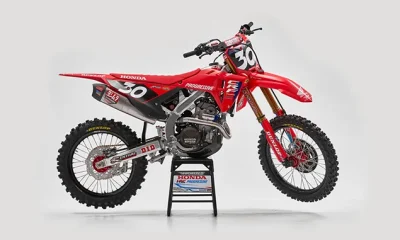
 Motorsports3 weeks ago
Motorsports3 weeks agoJo Shimoda Undergoes Back Surgery
-

 NIL2 weeks ago
NIL2 weeks agoBowl Projections: ESPN predicts 12-team College Football Playoff bracket, full bowl slate after Week 14
-

 Motorsports6 days ago
Motorsports6 days agoSoundGear Named Entitlement Sponsor of Spears CARS Tour Southwest Opener
-

 Rec Sports3 weeks ago
Rec Sports3 weeks agoHow this startup (and a KC sports icon) turned young players into card-carrying legends overnight
-

 Rec Sports2 weeks ago
Rec Sports2 weeks agoRobert “Bobby” Lewis Hardin, 56
-
Sports2 weeks ago
Wisconsin volleyball sweeps Minnesota with ease in ranked rivalry win
-
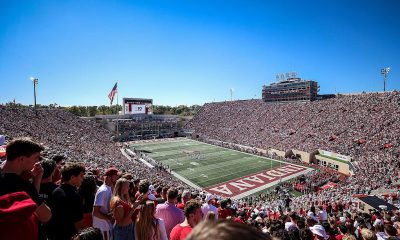
 NIL3 weeks ago
NIL3 weeks agoIndiana’s rapid ascent and its impact across college football
-

 Motorsports3 weeks ago
Motorsports3 weeks agoPohlman admits ‘there might be some spats’ as he pushes to get Kyle Busch winning again
-
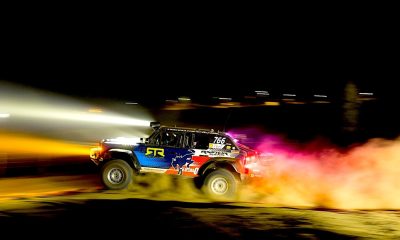
 Motorsports3 weeks ago
Motorsports3 weeks agoWhat stands behind Ford’s commitment to becoming ‘the Porsche of off-road racing’































